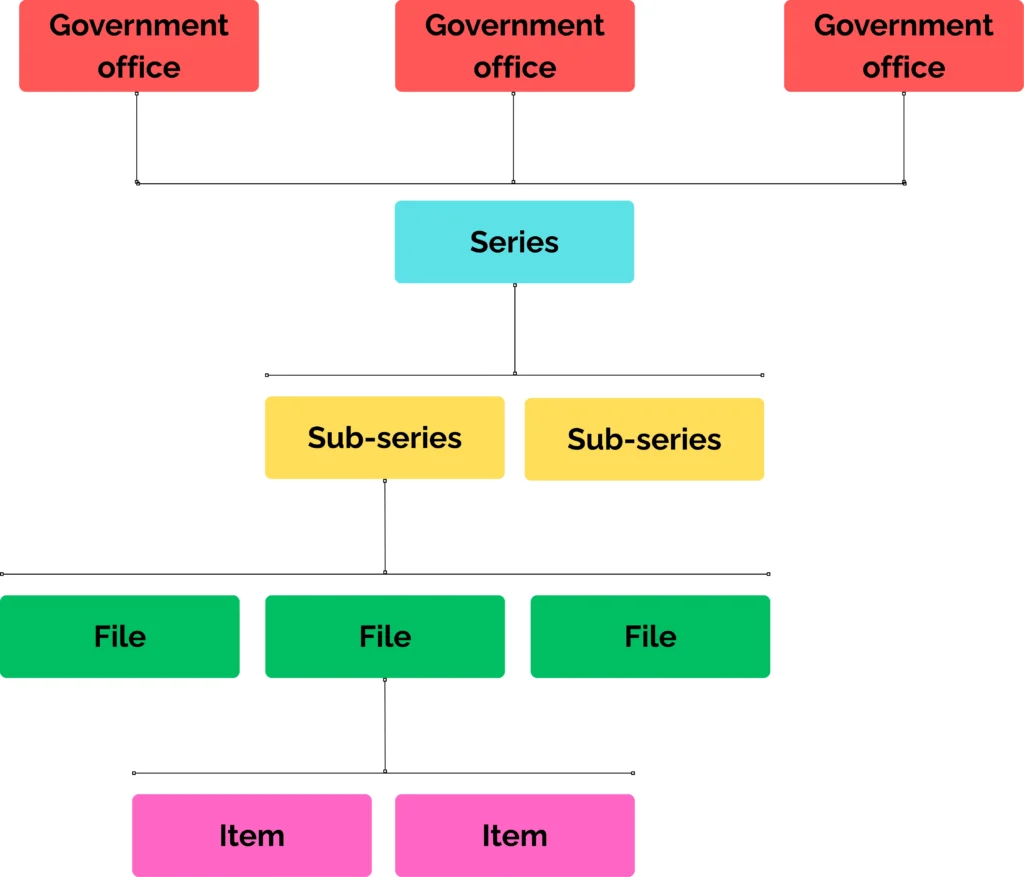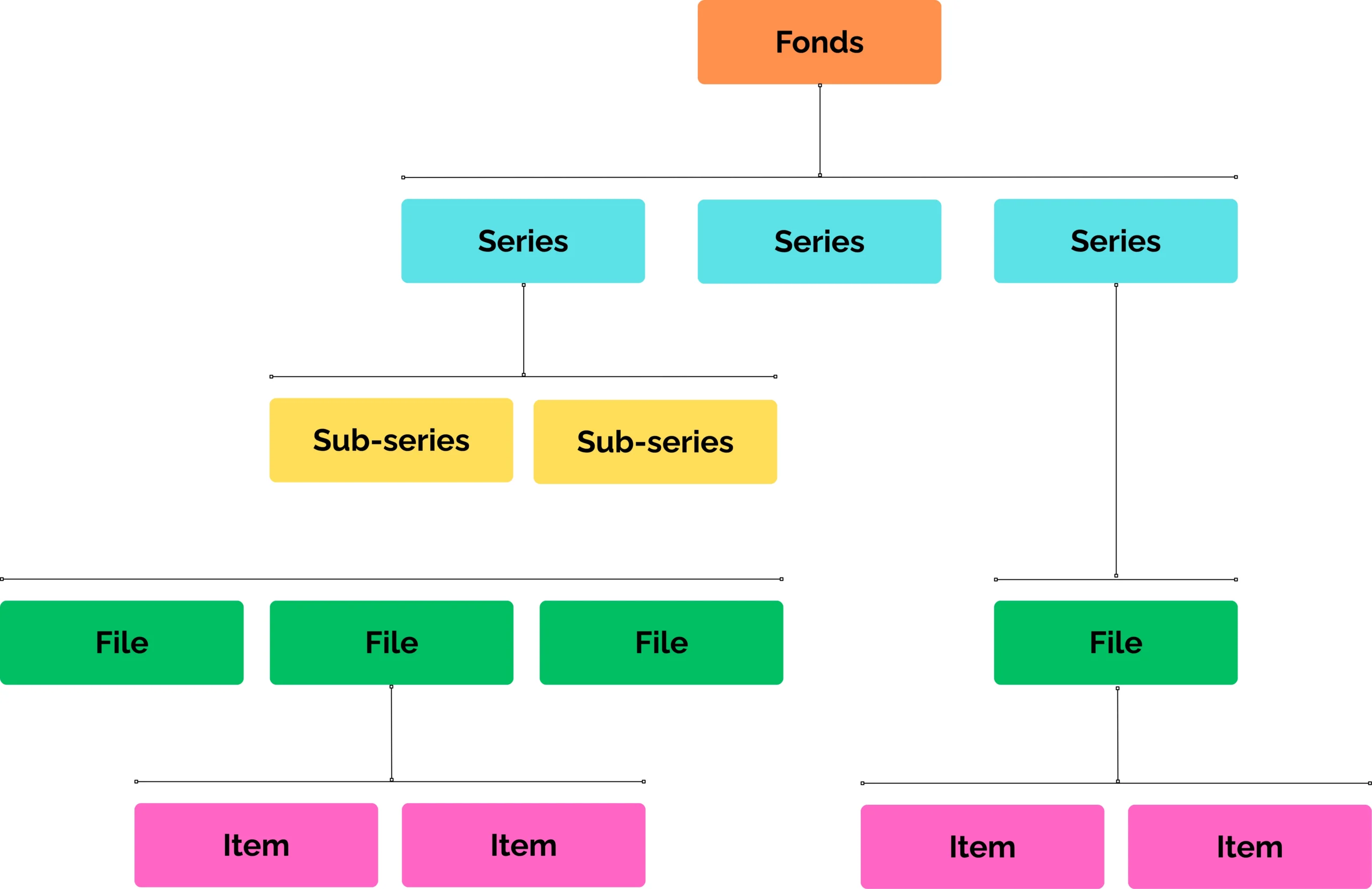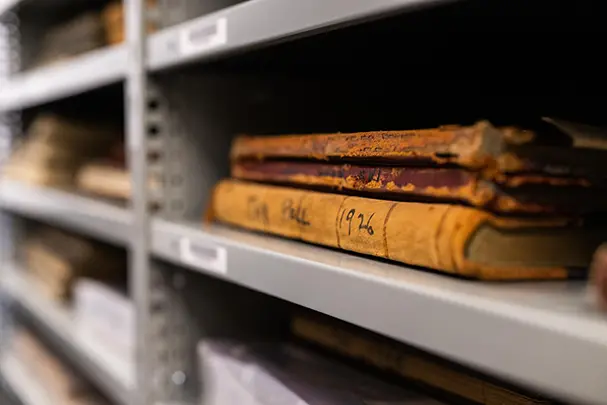Who can use our collections
Our collections are available to the public for research purposes.
They can be accessed in person for free.
We welcome first-time researchers, educators, students, artists and others to make use of our collections and services.
What we have
Our holdings are comprised of three different collections:
How we organize our collections
All information about items in collections is held in our Collection Search, called AIMS.
Learn more about how to use Collection Search to discover items and submit requests to view them in person or order reproductions.
Archival collection
The archival collection is comprised of two streams:
- government records
- private records
Government records
Government records are made up of the documents, volumes, maps, photographs, drawings, films and electronic files created by offices of the Government of Ontario while carrying out their functions. These records exist from before the founding of Ontario (and Canada) in 1867 and will include transfers from current and future governments.
We organize government records by series. You know you are looking at government records in Collection Search when the reference code starts with RG.
A series is a group of records that:
- result from a particular government function or activity
- share a similar format
- were originally kept together by one or more government offices
Examples of government record series include:
Government record series can also be broken down further into sub-series. For example:
Series and sub-series consist of files and items. These are the folders that live inside boxes, and the individual records they contain, that researchers look through in the Reading Room.

Private records
Private records include documents, letters, diaries, photos, films, maps, drawings, electronic files and more. They are donated to us by individuals, organizations and businesses seeking to preserve and make available their records for public researchers. We decide which private donations to accept based on whether they have “provincial significance.
Learn about our donation process.
Private records are organized by fonds or collections. You know that you are looking at private records in Collection Search when the reference code starts with F or C.
Fonds are titled after the creator of the records. We try to keep fonds in the original order they were in when they were donated to us. For most fonds, you will be able to find descriptions at the series, sub-series and file levels. Sometimes we describe individual items.

Library collection
Our library collection is made up of many kinds of published materials, including:
- academic history books
- rare books
- books published by organizations and businesses
- government reports published for public consumption
Items in the library start with a call number.
Doing archival research
For the most part, doing archival research isn’t as simple as looking something up online.
When you look at archival records, you are encountering things that were created for a specific place and time. The people who created them didn’t imagine that other people in the future would ever look at them. Often, individual records don’t offer us written context about who created them, why they were created and why they might be important to look at.
Most items in our archival collection have never been studied closely by anyone.
Archivists arrange and describe records so they are searchable in our Collection Search, but in most cases you’ll have to look through an entire box or even boxes to find the information you seek.
Start by topic
You need to have an individual or topic in mind before you start your research. A topic can be broad (“basketball”) or specific (“varsity basketball in Kitchener in the 1920s.”)
Visit Topics A-Z to learn about records we have already identified as being valuable to researchers.
Or:
Search Collection Search by topic keyword:
- Select Archival search from the left menu in AIMS.
- Type in your keyword(s).
- Scroll to find record descriptions of interest.
- Request records to view in-person OR order a reproduction.
Get research help if you can’t find records that fit your topic.
Develop a research question
What are you trying to find out from examining archival records?
Besides a topic, it’s important to have a question that guides your research. A question allows you to think of multiple ways to approach your topic.
Questions can be personal: what is my family’s history in Ontario?
They can be about a community, place or organization you care about: why did theatre become so popular with Franco-Ontarian audiences in the 1970s?
Or they might help you better understand the history of an event or government program: how did the Hogg’s Hollow Disaster in Toronto in 1960 lead to better protections for workers?
Written histories can help you narrow your research question.
Search Collection Search for publications about your topic.
- Select Library search from the left menu in AIMS.
- Type in your topic keyword(s).
- Scroll to find library items of interest.
- Order library items to read in-person in the Reading Room.
What government records might tell you
You should consider including government records in your research if you are seeking information about:
- your family
- community organizations
- cultural associations
- artists and arts councils
- businesses
- labour unions
- equity-seeking groups
Most of our archival collection is comprised of government records.
These records often detail the everyday activities of government employees carrying out of their official duties, including interaction with private citizens and organizations.
They may provide information on the activities of these individuals or organizations, and may deepen your understanding of historical changes in public perception and government policy decisions related to your topic.

